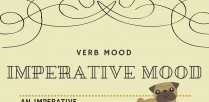The differences between who vs whom, lay vs lie and other confusing word pairs can be difficult to discern. When combined, apostrophes, homonyms, subtle spelling differences and alternate definitions create a recipe for trouble. The following examples should clear some of the confusion surrounding these similar word pairs and homonyms.
Who vs. Whom
 Knowing when to use who vs whom can be a sticking point for the most experienced writers. Who is always subjective while whom is objective. The preposition “to” is a good indicator of the objective form. When in doubt, use the “he / him” or “she / her” test. For example:
Knowing when to use who vs whom can be a sticking point for the most experienced writers. Who is always subjective while whom is objective. The preposition “to” is a good indicator of the objective form. When in doubt, use the “he / him” or “she / her” test. For example:
Throw the ball to him?
Throw the ball to whom?
To whom it may concern.
Please send this to him.
She’s sitting with him?
Who’s sitting with whom?
Adapt vs. Adopt
The key difference between adapt vs adopt is that to adapt functions a verb denoting an adjustment or change while adopt can function as verb, noun or adjective meaning to follow, assume or embrace. For example:
They adapted the novel for television.
They eagerly adopted the changes.
The city adapted to change.
Affect vs. Effect
Closely related in meaning, these confusing words can both function as nouns and verbs with slightly altered meanings. Affect is almost always used as a verb demonstrating change while effect refers to the results. One common exception that adds to the affect vs effect confusion is the construction “to effect change,” which is similar to the word effectuate.
Advise vs. Advice
In the case of advise vs advice, one letter makes all the difference. To advise is always a verb while advice is a noun. Remember: advisers advise and the information they provide is advice.
Lie vs. Lay
This pair is one of the all-time greats of confusing words. One reason for the confusion is the past tense of lie, which also happens to be lay. Lie vs lay can be differentiated because lay is a transitive verb that affects objects or is done to something while lie is an intransitive state-of-being verb that refers to the subject. For example:
Chickens lay eggs. (Transitive)
Please lay those heavy suitcases down. (Transitive)
I lay awake wondering. (Intransitive)
He lay in a state of confusion. (Intransitive)
Their vs. There
This pair is a naturally confusing combination with contractions and possessives clouding matters further. Their vs there is a perfect example of the versatility of vowels and letter combinations that may sound the same but mean something totally different.
It’s vs. Its
The apostrophe is an essential punctuation mark, but its versatility and strong association with possessives can lead to some confusion. In the example it’s vs its, the apostrophe holds the place of the dropped “I” in the contraction “it is”.
This list is only the beginning, but the included examples represent universal rules related to spelling, grammar and punctuation that can prevent common mistakes and demystify other confusing words. Part two will continue our exploration of confusing words and homonyms. In the meantime, feel free to share your favorite examples of confusing words in the comments.
To Be Continued….







